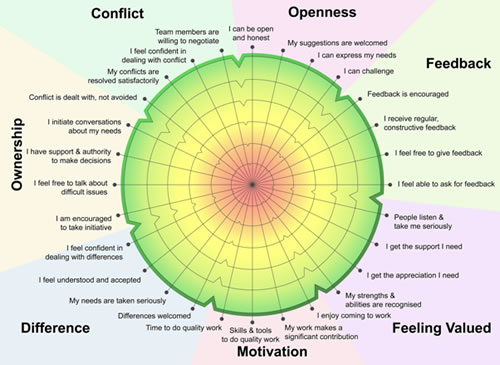
The business case for Employee Engagement has been strongly made but many organisations are struggling to create high levels of engagement. Research by UKCES and CIPD consistently shows that one of the principal reasons for this is lack of employer engagement with the employee engagement process!
There is wide spread agreement that the key to organisational success is people. Get the people bit right and you are likely to have motivated, productive staff and a more successful business. Get it wrong and you may be faced with low morale, poor levels of motivation, higher levels of absence and you will often be lacking that creative spark – particularly when it comes to interacting with your customers.
Engagement cannot be imposed from above. It’s about creating a cultural shift in the way organisations behave and hinges around four key issues:
• Leadership – leaders with a vision that means something to staff and who value how individuals contribute
• Trust – values that are lived and not just spoken, leading to a sense of trust and integrity
• Line managers who empower rather than control their staff
• Voice -employees who have the chance to voice their views and concerns. Your employees know first-hand what works and what does not. If you can harness that knowledge productively you will get better decision making and more innovation.
However, getting employees to contribute their views and concerns in an open, constructive and non-critical manner, is not always easy. The traditional method is to use a staff survey but these are fraught with difficulties. Open questions tend to get vague answers whilst questions with limited answer options are often challenged on the grounds of leading people. Then there is the question of confidentiality. Another factor centres around the wording of the questions – do questions drafted by managers allow a fair reflection of workers views?
An alternative approach is to use one of the many proprietary surveys that are commercially available. Having gained experience of a number of these, in our opinion the best is An Even Better Place to WorkTM. Participants are asked to complete an online questionnaire based on seven key indicators:
• Openness
• Feedback
• Feeling valued
• Motivation
• Difference management
• Ownership
• Conflict Management
The question constantly asked is “what am I going to do?” rather than “what is management going to do?”
Results, which are instantaneous, are confidential to the individual but displayed collectively on a team, division or whole business basis. The display also shows the lowest, highest and average scores for the team.
The two big advantages of this system are:
• It encourages and enables teams to identify issues within the team and address them internally with minimal if any management intervention.
• Because the survey is easy to complete and takes little time, it can be used repeatedly to identify issues and measure the impact of interventions.

For further information visit: http://www.anevenbetterplacetowork.com/


